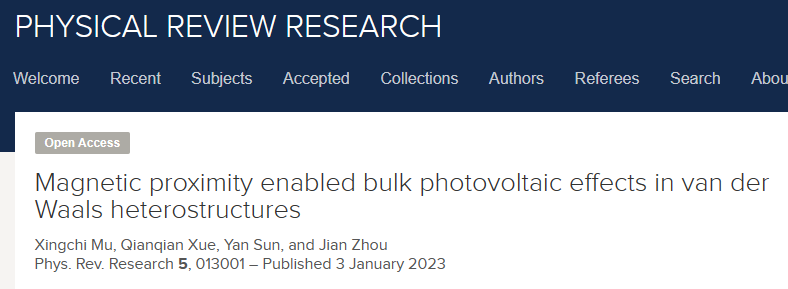
The bulk photovoltaic (BPV) effect, a second-order nonlinear process that generates static current under light irradiation, requires centrosymmetric broken systems as its application platform. To realize measurable BPV photocurrent in spatially centrosymmetric materials, various schemes such as chemical doping, structural deformation, or electric bias have been developed. In this paper, we suggest that the magnetic proximity effect via van der Waals (vdW) interfacial interaction, a contact-free strategy, also breaks the centrosymmetry and generates large BPV currents. Using theBi2Te3quintuple layer as an exemplary material, we show that magnetic proximity effect from MnBi2Te4 septuple layers yields a finite and tunable shift and injection photocurrents. We apply group theory and first-principles calculations to evaluate the layer-specific shift and injection current generations under linearly polarized light irradiation. We find that the magnetic injection photoconductivity that localized on the Bi2Te3 layer can reach >70×108A/(V2s), so that a one-dimensional linear current density on the order of 0.1 mA/nm can be achieved under an intermediate intensity light. In addition to charge current, we also extend our discussions into spin BPV current, giving pure photogenerated spin current. The vertical propagation direction between the charge and spin photocurrents suggests that they can be used individually in a single material. Compared with previously reported methods, the magnetic proximity effect via vdW interface does not significantly alter the intrinsic feature of the centrosymmetric material (e.g., Bi2Te3), and its manipulation can be easily achieved by the proximate magnetic configurations (ofMnBi2Te4), interlayer distance, and light polarization.
Link:Phys. Rev. Research 5, 013001 (2023) - Magnetic proximity enabled bulk photovoltaic effects in van der Waals heterostructures (aps.org)